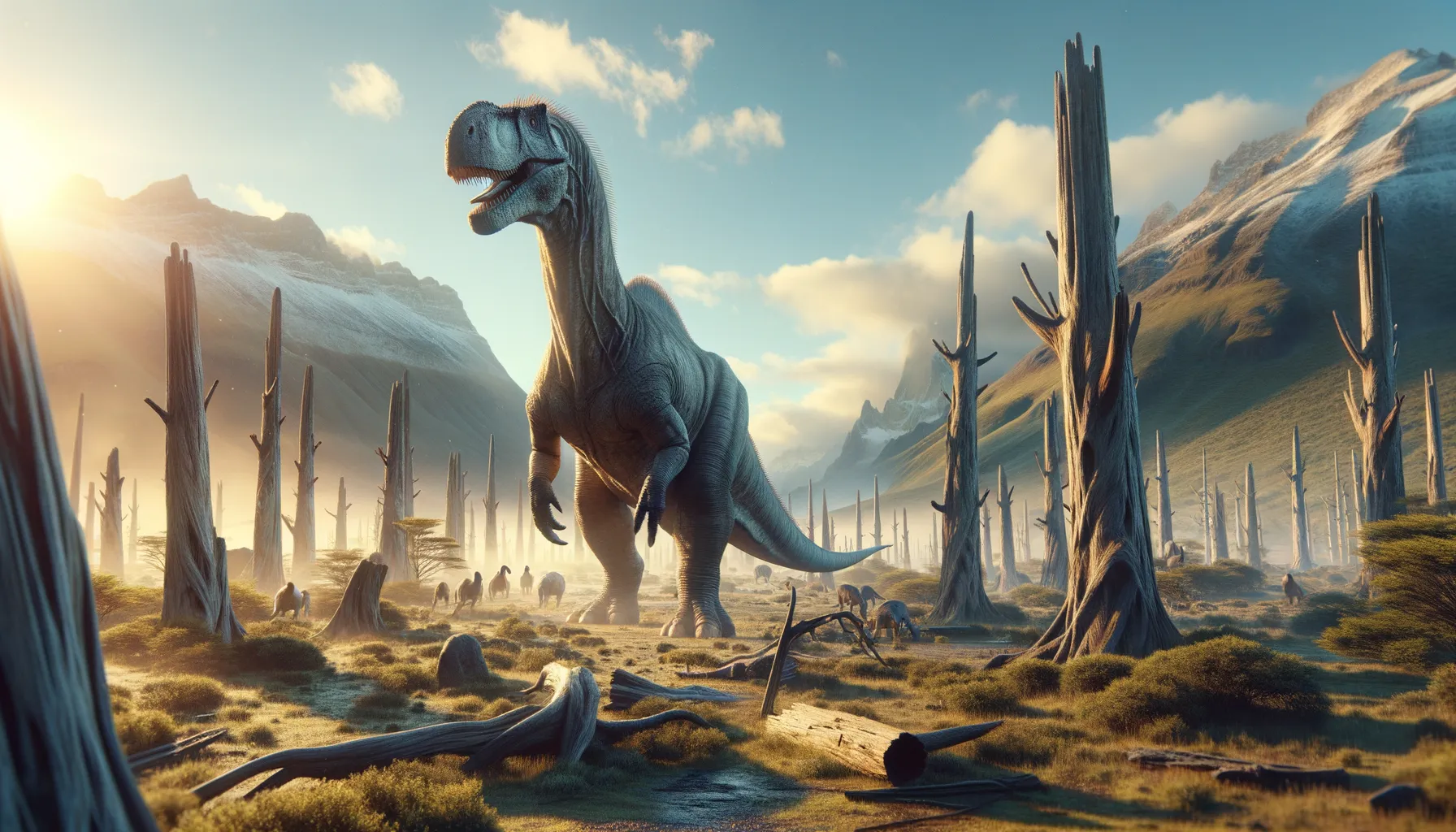
Argentinosaurus
Giant of the ancient world, untamed and grand.
Period
Cretaceous
Length
Approximately 30-35 meters long.
Height
Could reach heights of 21 meters.
Weight
Weighed around 77 tonnes.
Argentinosaurus was one of the largest known land animals, belonging to the group of long-necked dinosaurs called sauropods. It roamed the Earth during the Late Cretaceous period in what is now Argentina. Its enormous size was both its key defense mechanism and a remarkable feat of nature. Despite its intimidating stature, Argentinosaurus was a herbivore, feeding on vast quantities of plant matter to sustain its massive body.
Diet
Argentinosaurus was an herbivore, consuming vast amounts of plant life. Its diet mainly consisted of ferns, conifers, and other prehistoric plants. The dinosaur needed large quantities of food each day to maintain its massive body.
Hunting
As a herbivore, the Argentinosaurus did not hunt for food. Instead, it relied on the abundant vegetation available in its habitat. The lack of predation allowed it to focus on foraging for leaves and high-growing plants.
Environmental challenges
Argentinosaurus faced environmental challenges such as changes in vegetation and climate during the Cretaceous period. Its large size required vast amounts of food, making it vulnerable to habitat changes that could reduce food supply. The expansive land it needed for grazing would have made droughts and ecological shifts significant threats.
Speed
Slow, likely due to its enormous size.
Lifespan
Estimated to live several decades.
First discovery
Discovered in Argentina in 1987.
Fun Facts
- Argentinosaurus is believed to be one of the largest land animals to have ever existed, possibly reaching lengths up to 100 feet.
- It lived during the Late Cretaceous period, around 94 to 97 million years ago, in what is now South America.
- Argentinosaurus fossils were first discovered in Argentina, which is how it got its name.
- Despite its enormous size, Argentinosaurus likely chewed its food very little, swallowing plants whole to be broken down in its large stomach.
- The dinosaur's massive size also meant it probably had a slow metabolism and moved at a relatively slow pace compared to smaller dinosaurs.
- Paleontologists estimate that Argentinosaurus could weigh as much as 100 tons, which is about the weight of 14 elephants.
- Its long neck was useful for reaching high and low foliage, allowing it to consume vast amounts of vegetation needed to sustain its gigantic body.
Growth and Development
Growing to its enormous size would take many years, with juveniles likely requiring abundant food and protection from predators. It's believed that, like other sauropods, Argentinosaurus experienced rapid growth spurts during its early years. Its growth and development were influenced by its need to reach sizes that could deter predators.
Habitat
Argentinosaurus inhabited regions that are now part of South America, which were rich in plant life. The environment provided the lush vegetation it needed for sustaining its massive body. It likely lived in open woodlands or forested plains, where its long neck could reach high vegetation.
Interaction with other species
Argentinosaurus coexisted with various other dinosaur species, including potential predators. Its enormous size likely discouraged attacks from carnivorous dinosaurs. Symbiotic relationships with smaller herbivores may have existed, as they shared the same habitats and food resources.
Natural lifespan
Argentinosaurus likely had a long natural lifespan, potentially several decades.
Reproduction
Argentinosaurus likely laid eggs, as with other sauropods. Reproductive strategies would have included finding secure nesting sites to protect eggs from predators. Hatchlings would have been much smaller than adults, requiring rapid growth to achieve their immense size.
Social behaviour
Argentinosaurus may have lived in herds for protection and social interaction. Herd behavior would have allowed them to cooperate in finding food and deterring predators. Social structures within herds could have included complex communication and coordination.
Fossil locations
The first fossils of Argentinosaurus have been found in the Patagonia region of Argentina. These remains provide critical insight into the life of one of the largest known land animals. Fossil discoveries are limited but vital for understanding its physical structure and living conditions.
